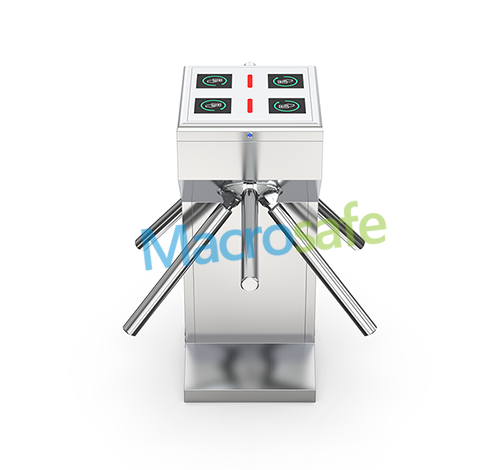Data Analytics and Insights from Stadium Turnstile Systems

In the realm of sports and entertainment venues, the collection and analysis of data play a crucial role in enhancing the overall fan experience and optimizing stadium operations. Stadium turnstile systems, equipped with advanced technologies, provide a wealth of data that can be harnessed to gain valuable insights. In this article, we will explore the significance of data analytics and the insights derived from stadium turnstile systems, highlighting how this information contributes to improved decision-making, enhanced crowd control, and a more satisfying experience for fans.
-
Operational Efficiency: Streamlining Entry Processes
Efficient entry processes are integral to a smooth and enjoyable fan experience. Data analytics from stadium turnstile systems offer valuable insights into the flow of fans entering and exiting the venue. By analyzing patterns, peak times, and entry rates, stadium operators can optimize turnstile operations, ensuring that sufficient staff members are present during high-demand periods to minimize queues. This data-driven approach streamlines entry processes, reduces waiting times, and improves overall operational efficiency.
-
Crowd Control and Safety: Monitoring Attendance and Occupancy
Effective crowd control is paramount in ensuring fan safety and maintaining a comfortable environment within the stadium. Stadium turnstile systems generate data that enables real-time monitoring of attendance and occupancy levels. By analyzing this data, stadium operators can proactively manage crowd density in different areas, identify potential bottlenecks, and implement measures to ensure compliance with safety regulations. These insights help optimize crowd flow, prevent overcrowding, and enhance the overall safety and security of fans and staff.
-
Revenue Optimization: Analyzing Fan Behavior and Engagement
Data analytics from stadium turnstile systems provide valuable insights into fan behavior and engagement. By correlating turnstile data with ticket sales, concessions, and merchandise purchases, stadium operators can understand fan preferences, identify high-demand events or areas within the venue, and optimize revenue opportunities. For example, analysis of fan movement patterns can inform decisions on optimal placement of concessions or merchandise stands, leading to increased sales and an improved fan experience.
-
Marketing and Personalization: Tailoring Fan Experiences
In the digital age, personalization is key to engaging fans and building a loyal fan base. Turnstile data analytics provide stadium operators with information on fans’ entry patterns, attendance frequency, and preferences. This data can be used to tailor marketing campaigns and promotions to specific fan segments. From targeted notifications and offers to personalized greetings upon entry, leveraging data analytics allows stadium operators to create a more personalized and meaningful fan experience, fostering a strong emotional connection with fans.
-
Facility Management and Maintenance: Data-Driven Decision-Making
Stadium turnstile systems generate data that can provide insights for facility management and maintenance. By analyzing the frequency of turnstile usage, stadium operators can identify high-traffic areas and allocate resources accordingly. For instance, if a specific turnstile consistently experiences technical issues, data analytics can help pinpoint the problem and facilitate prompt maintenance. This data-driven approach to facility management ensures that resources are allocated effectively, reducing downtime and ensuring optimal functionality of turnstile systems.
-
Predictive Analytics: Anticipating Fan Behavior and Trends
Data analytics from stadium turnstile systems can also be leveraged for predictive analytics, enabling stadium operators to anticipate fan behavior and trends. By analyzing historical data, attendance patterns, and external factors such as weather, operators can make data-driven decisions. For example, if data indicates that attendance is expected to be higher than usual for a particular event, stadium operators can take preemptive measures such as increasing staffing levels, ensuring sufficient concessions, or adjusting security protocols. Predictive analytics enhances operational preparedness, leading to a more seamless and enjoyable fan experience.
Conclusion:
Data analytics derived from stadium turnstile systems provide a wealth of valuable insights that have a tremendous impact on stadium operations. From streamlining entry processes and optimizing crowd control to revenue optimization, personalized marketing, facility management, and predictive analytics, the power of data cannot be underestimated. By harnessing the insights gained from turnstile data, stadium operators can make informed decisions, provide exceptional fan experiences, and ensure the safety and satisfaction of fans and staff. Embracing data analytics in stadium operations is key to driving success, fostering innovation, and elevating the overall fan experience.



